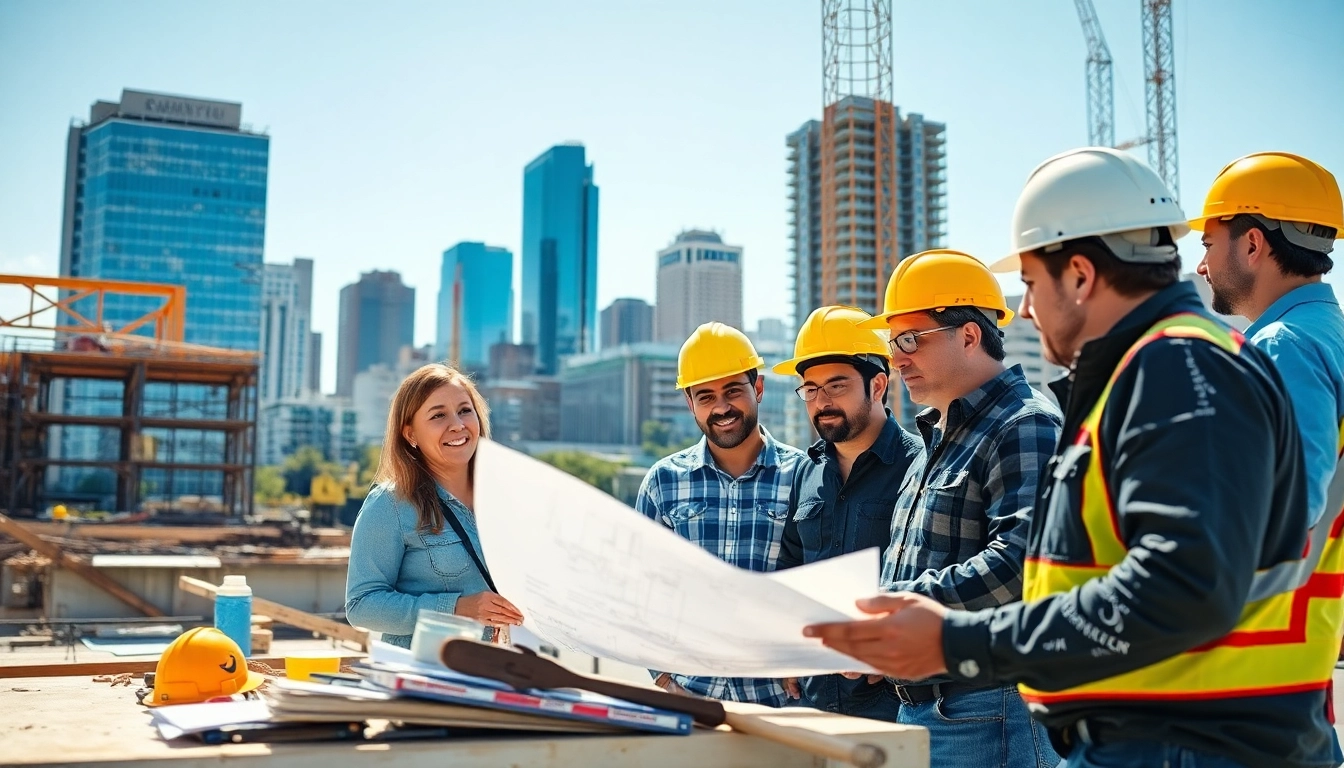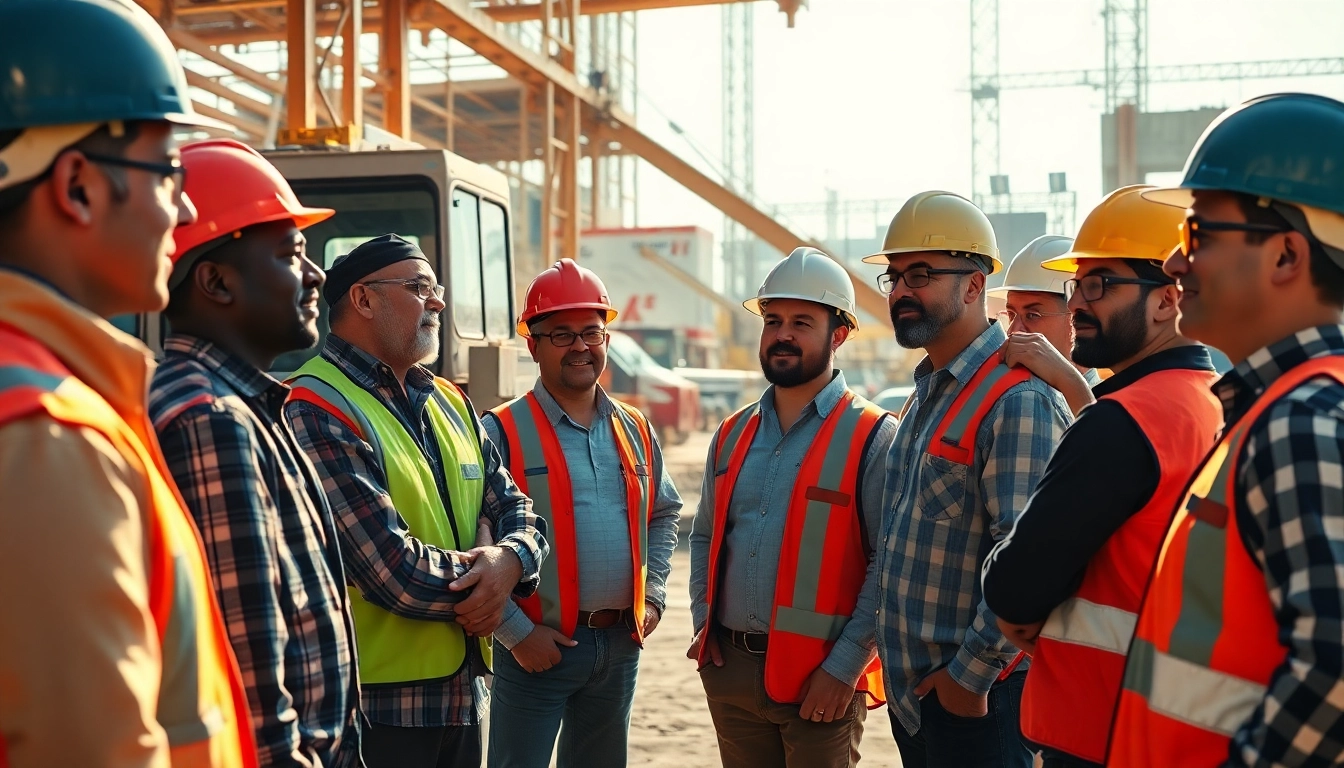Understanding Austin Construction: Industry Overview
Austin’s construction landscape has experienced significant transformation over the past several years, driven by a unique blend of population growth, economic expansion, and innovative project designs. With a rich mixture of residential, commercial, and public infrastructure projects in the pipeline, the austin construction industry is bustling with activity and opportunities. This segment will delve into various aspects of the construction sector, including growth patterns, major contributors, and emerging trends that define the city’s evolving construction domain.
The Growth of Construction in Austin
The rapid growth of Austin has made it one of the fastest-growing metros in the United States, attracting millions of new residents annually. This influx has resulted in a surging demand for new housing developments, commercial spaces, and infrastructure improvements. According to the U.S. Census Bureau, Austin’s population increased by more than 20% in the past decade, resulting in skyrocketing demand for construction.
Several factors underpin this growth. The city’s thriving tech industry has acted as a magnet for talent and investment, resulting in numerous startup and established companies vying for office spaces. Similarly, newer residential communities are sprouting throughout the city to accommodate families looking to settle in this vibrant environment. The result is a comprehensive building boom that has reshaped the city’s skyline and the overall construction landscape.
Key Players in the Austin Construction Market
The Austin construction market features a diverse set of players that contribute to the vibrancy of this industry. Key players include established construction firms, innovative startups, architectural firms, and subcontractors specializing in various trades. Among these, companies such as Austin Industries and The Austin Company stand out due to their substantial contributions to the civil, commercial, and industrial sectors.
These firms are not just builders; they are innovators and problem-solvers enabling Austin to meet its construction demands while adhering to sustainability practices. Small-to-medium-sized firms also play a pivotal role by infusing creativity and agility into the project lifecycle, fostering a competitive environment that benefits both clients and the community.
Current Trends Shaping Austin Construction
As the construction industry in Austin evolves, several key trends are shaping its future. One dominant trend is the push for sustainable and environmentally-friendly building practices. Many firms are focusing on green building certifications like LEED, which not only reduce the carbon footprint but also appeal to eco-conscious buyers.
Additionally, the integration of technology in construction projects has seen significant growth. Enhanced project management software, Building Information Modeling (BIM), and drone technology enable construction firms to optimize planning and execution while minimizing risks. Another notable trend is the increasing demand for mixed-use developments, which combine residential, commercial, and retail spaces to create vibrant community hubs.
Common Challenges Faced by Austin Construction Firms
Regulatory and Compliance Issues
Constructing in Austin requires navigating a complex labyrinth of local regulations and zoning laws. The city’s rapid growth has led to more stringent building codes and safety regulations aimed at ensuring high-quality construction while protecting the community and environment. While these regulations are crucial for promoting safe and sustainable practices, they can also pose significant challenges to construction firms.
Firms must invest time and resources to ensure compliance, engage with the permitting process, and often contend with public input that can delay projects. This necessitates skilled project managers who can efficiently manage compliance and foster positive relationships with local authorities.
Labor Shortages in the Construction Sector
Labor shortages represent another key challenge affecting the Austin construction landscape. The construction industry has long faced difficulties in attracting and retaining skilled labor, exacerbated by a booming economy that has drawn workers into higher-paying sectors, such as technology. According to the Associated General Contractors of America, many construction firms report that the inability to fill positions is stalling project timelines and increasing costs.
As a solution, companies are exploring alternative recruitment strategies, investing in training programs, and partnering with vocational schools to develop a skilled workforce capable of meeting industry demands. Additionally, improving working conditions and offering competitive wages can help attract and retain talent.
Managing Project Costs and Budgets
Financing construction projects in Austin can be complex, with constant fluctuations in material and labor costs impacting overall budgets. Factors such as supply chain disruptions and inflation have led to increased prices for key construction materials like lumber and concrete, posing challenges for project estimators and managers. To mitigate these impacts, firms must develop robust budgeting processes and explore alternative procurement strategies.
Effective risk management and strategic planning are vital. Construction companies are increasingly adopting integrated project delivery approaches and utilizing advanced estimation software to enhance cost management. Early contractor involvement is also becoming common, allowing firms to bring practical insights during the planning phases to better align costs and achieve expected outcomes.
Best Practices for Successful Construction Projects
Effective Project Management Techniques
Successful construction projects in Austin hinge on effective project management techniques that ensure aligned objectives and streamlined processes. The implementation of methodologies such as Agile project management has gained traction within the construction field. By fostering collaboration among various stakeholders and maintaining flexibility in the workflow, teams can adapt to changes and unexpected challenges effectively.
Moreover, utilizing project management software enables firms to coordinate tasks, track progress, and enable real-time communication. Establishing clear channels of communication across all parties—from architects to subcontractors—helps prevent conflicts and enhances overall project coherence. Regular progress meetings and updates are crucial as well, ensuring that all team members are aligned and aware of project objectives and challenges.
Importance of Sustainable Practices
Emphasizing sustainable practices is not only about adhering to regulations but also about fulfilling an increasing demand from clients for environmentally conscious projects. In Austin, flexible building codes and incentives for green construction are encouraging developers to prioritize sustainable building techniques. This includes the use of energy-efficient materials, innovations in water conservation, and prioritizing renewable energy sources.
Construction firms should stay informed about new technologies that enhance sustainability, such as solar panels and waste recycling systems. Collaborating with sustainability consultants can also yield valuable insights and methodologies that improve project outcomes, reduce operational costs, and elevate the firm’s reputation in a competitive marketplace.
Adopting New Technologies in Construction
Technological innovations are reshaping the construction landscape in Austin, influencing everything from design to execution. Building Information Modeling (BIM) stands as one of the most impactful advancements, allowing for collaborative design processes and efficient project visualization. Using this technology, all stakeholders can view the project in three dimensions, facilitating better decision-making and problem-solving.
Additionally, advancements in construction robotics and automation are streamlining repetitive tasks, lowering labor costs, and increasing safety on site. Companies adopting augmented reality (AR) and virtual reality (VR) also gain a competitive edge by enabling stakeholders to visualize the finished product before construction begins, enhancing client engagement and reducing the risk of project overruns.
Case Studies: Successful Austin Construction Projects
Residential Developments Transforming Austin
One exemplary case of a successful residential project is The Grove at South Austin, a master-planned community that combines single-family homes, multi-family units, and extensive green spaces. This development reflects the growing trend towards mixed-use neighborhoods that promote sustainable living by incorporating parks, walkways, and easy access to public transportation.
The Grove showcases resilience, not only in high aesthetic standards and high demand but also in its environmental initiatives, including rainwater harvesting systems and energy-efficient building designs. Such projects are setting a bar for future residential developments in Austin.
Commercial Constructions Setting Standards
In the commercial sector, the new Austin Central Library exemplifies innovative design and functionality, effectively serving the community’s needs. This building integrates cutting-edge technology with sustainable practices, boasting a green roof, rainwater collection systems, and energy-efficient systems. The library stands as a testament to maximizing public investment while fulfilling architectural aspirations.
By engaging the community during its design phase, the project gained public support, illustrating the importance of stakeholder involvement in contemporary construction projects.
Public Infrastructure Initiatives in Austin
Austin’s infrastructure projects, such as the ongoing expansion of the urban rail system, are critical in meeting the city’s growing transportation demands. The project aims to improve public transit accessibility and reduce congestion, aligning with the city’s broader goals of sustainability and reduced carbon emissions.
This ambitious project will not only enhance public transportation options but also inspire other cities facing similar growth challenges, showcasing the impact of strategic planning and community collaboration in public infrastructure development.
Future of Austin Construction: What to Expect
Emerging Trends and Innovations
The Austin construction industry is poised for continual evolution, with several emerging trends likely to influence practices and market dynamics. Foremost among these is the ongoing push for smart building technologies that utilize IoT (Internet of Things) devices to improve operational efficiency and enhance tenant experiences. These systems can optimize energy consumption, enhance security, and provide real-time feedback to building management.
Additionally, biophilic design, which seeks to connect people with nature through building design, is gaining traction within Austin’s eco-conscious market. Developers will increasingly incorporate natural elements into shared spaces, improving occupant well-being and productivity.
Investment Opportunities in the Austin Market
Investors are recognizing Austin as a burgeoning hub for opportunities in the construction sphere. With infrastructure improvements and a burgeoning job market, the city is attracting significant investments across residential, commercial, and industrial projects. City officials are actively promoting developments that align with sustainability initiatives, making it an attractive locale for eco-sensitive developments.
Investors looking to capitalize on technology’s impact in construction are focusing on startups that innovate in areas such as modular construction, advanced building materials, and digital project management tools. Identifying these trends can enhance investment returns and help shape a sustainable future for Austin’s construction landscape.
Community Impact and Urban Development
As Austin continues to grow, the community’s involvement in urban development becomes paramount. Engaging with residents and local businesses during planning and execution phases ensures that projects meet community needs and values. Initiatives that focus on affordable housing, accessible public spaces, and green infrastructure reflect Austin’s commitment to community-focused growth.
Building relationships within the community leads to a greater likelihood of project success and fosters lasting benefits for current and future residents. Through collective efforts and a shared vision, the future of Austin construction looks promising and poised for positive transformation.



